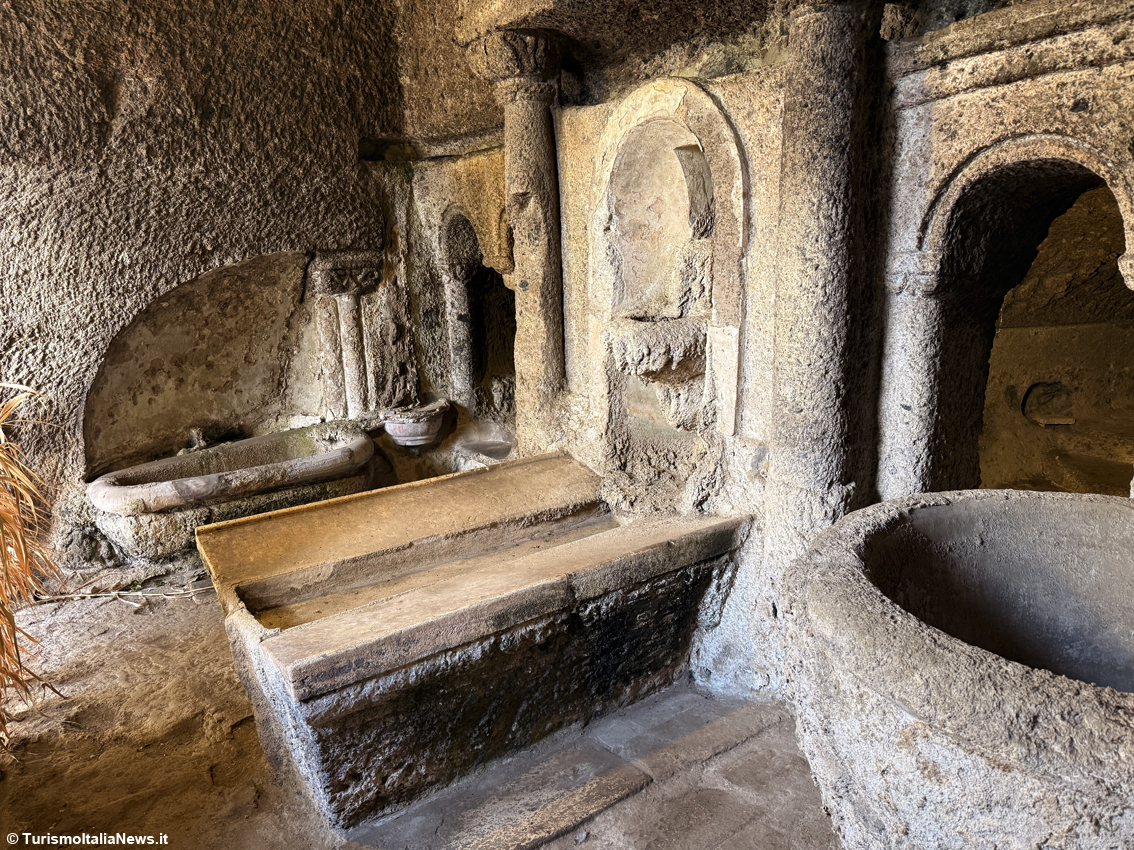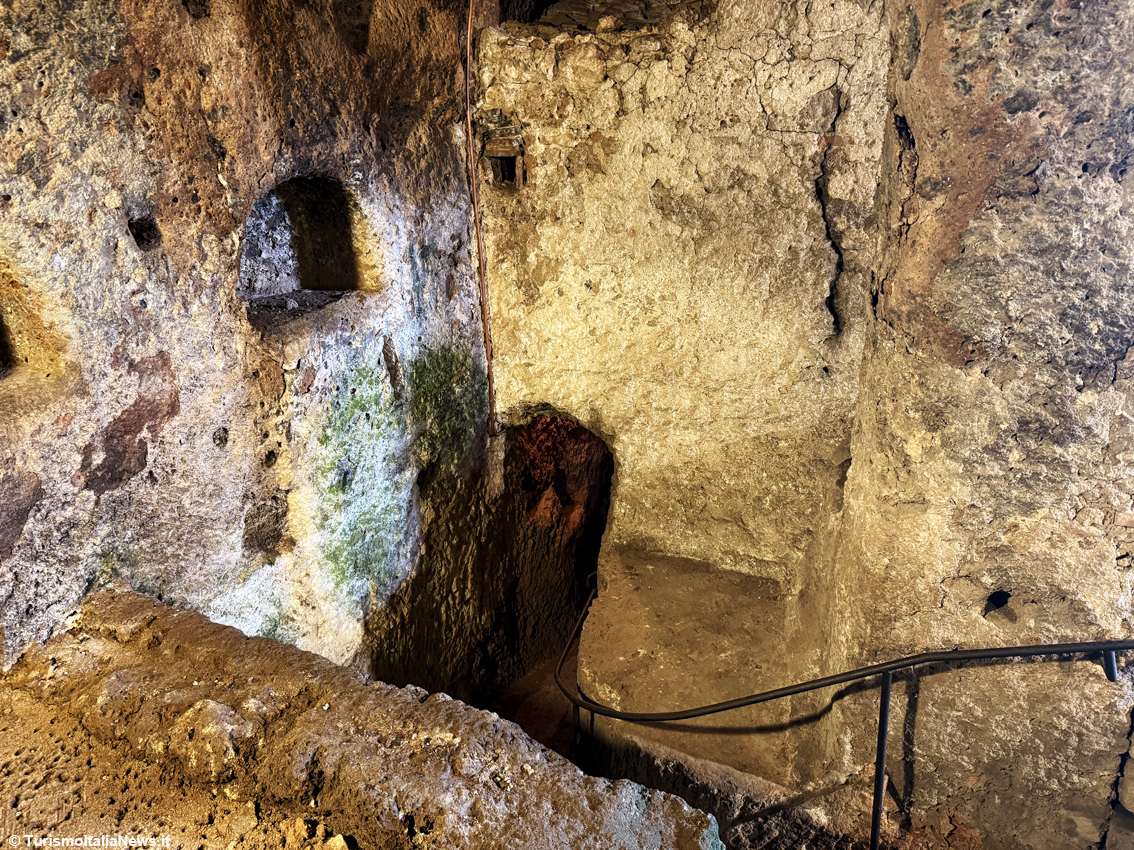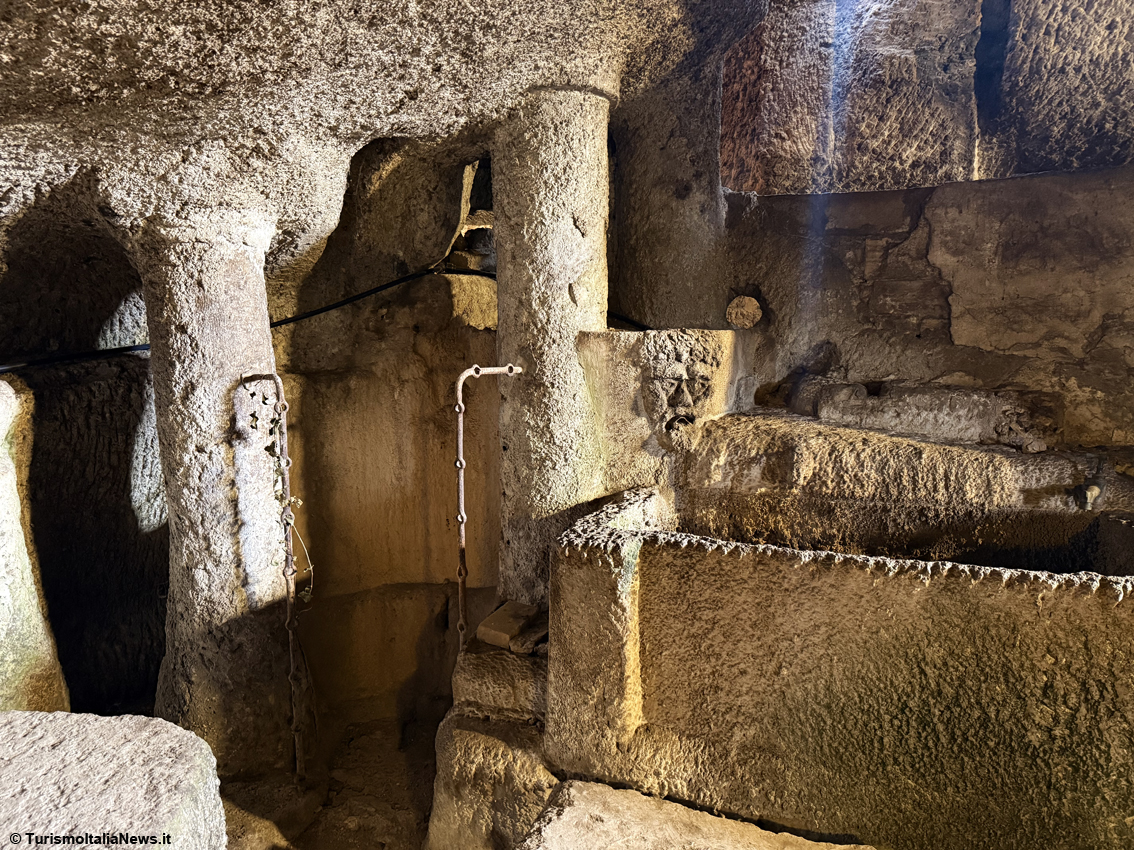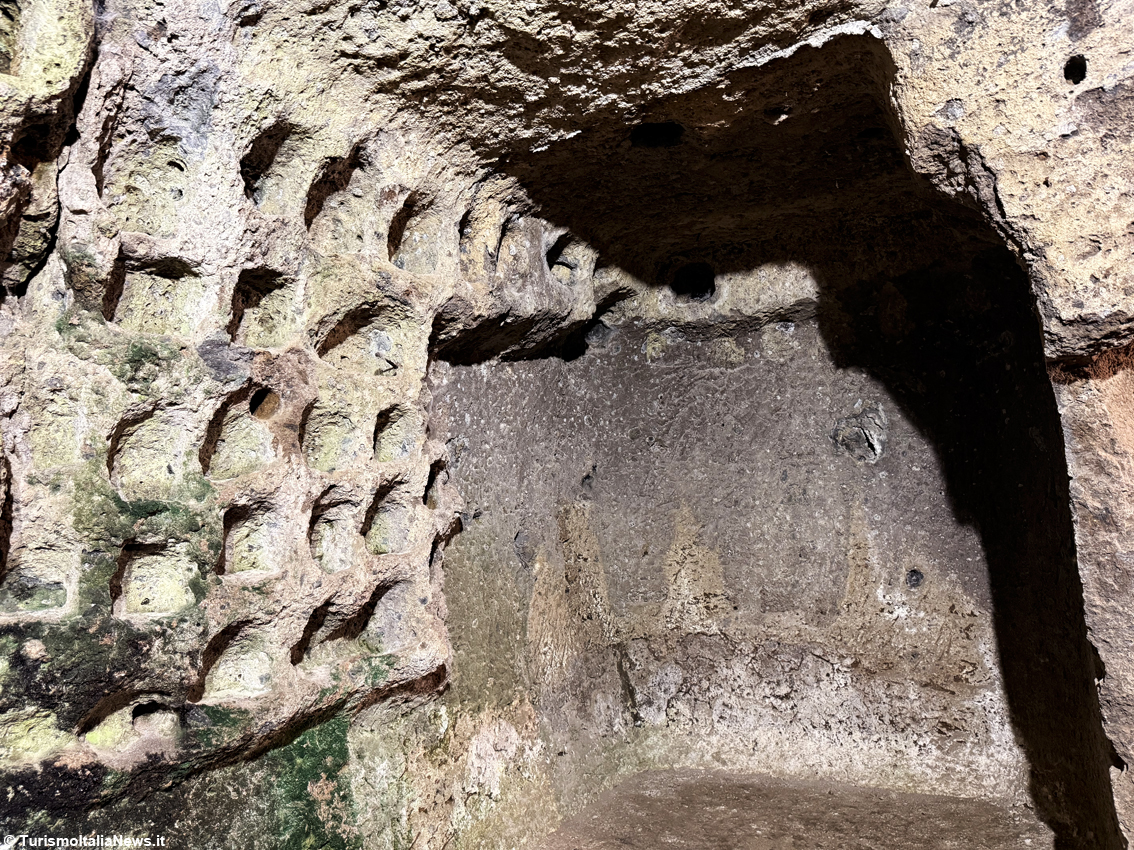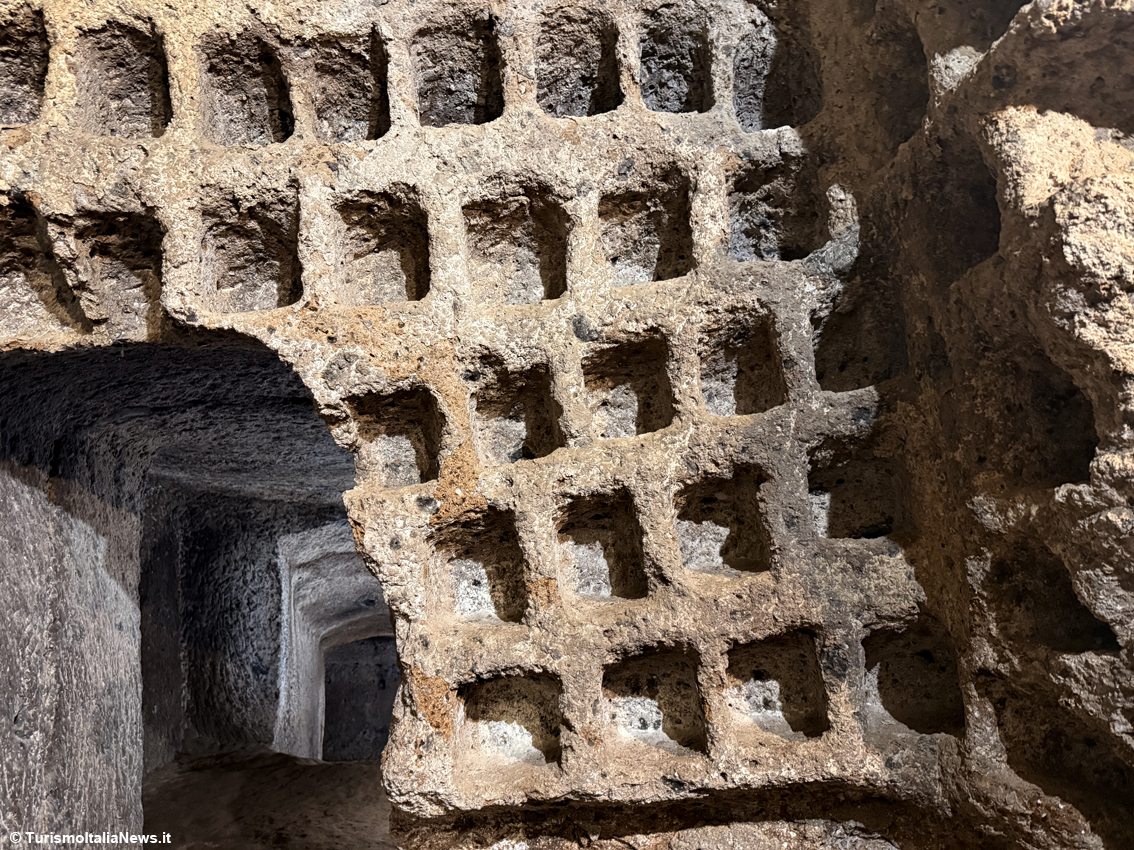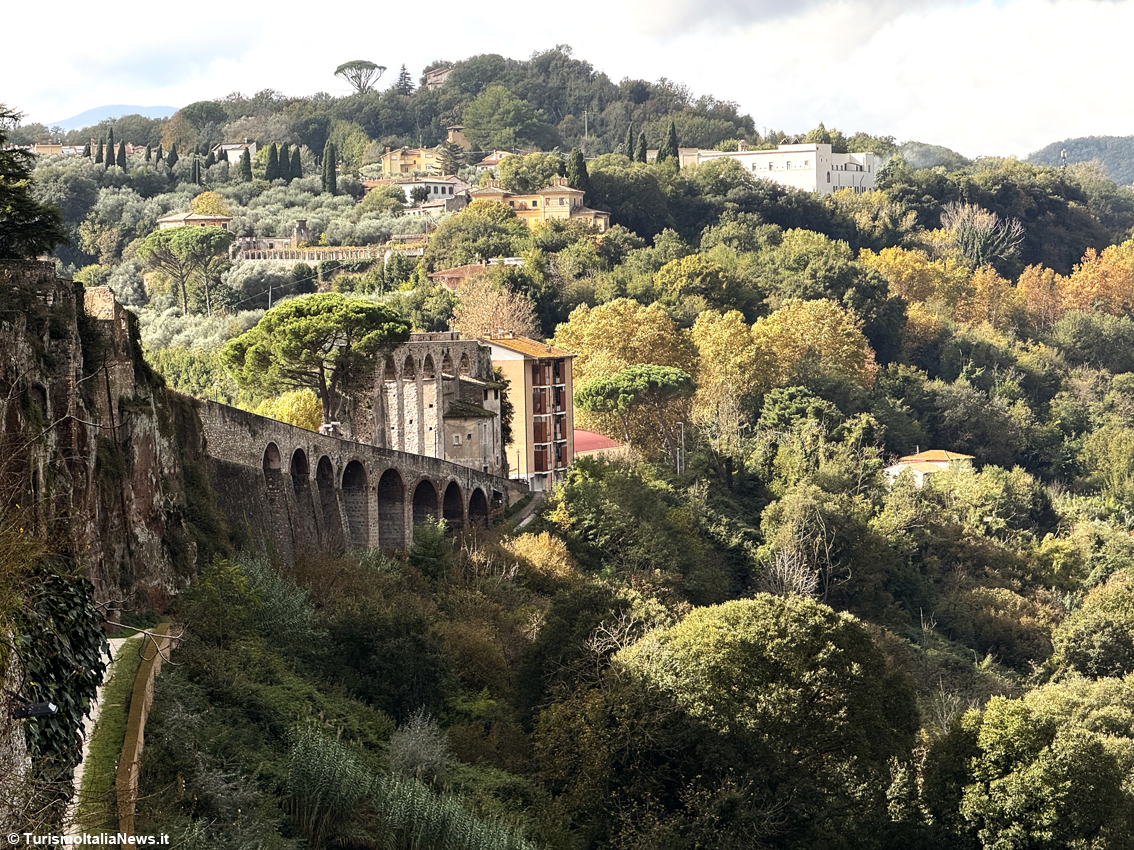Orte Underground: the mystery beneath our feet — a journey into the hidden heart of tuscia, between stone and human ingenuity
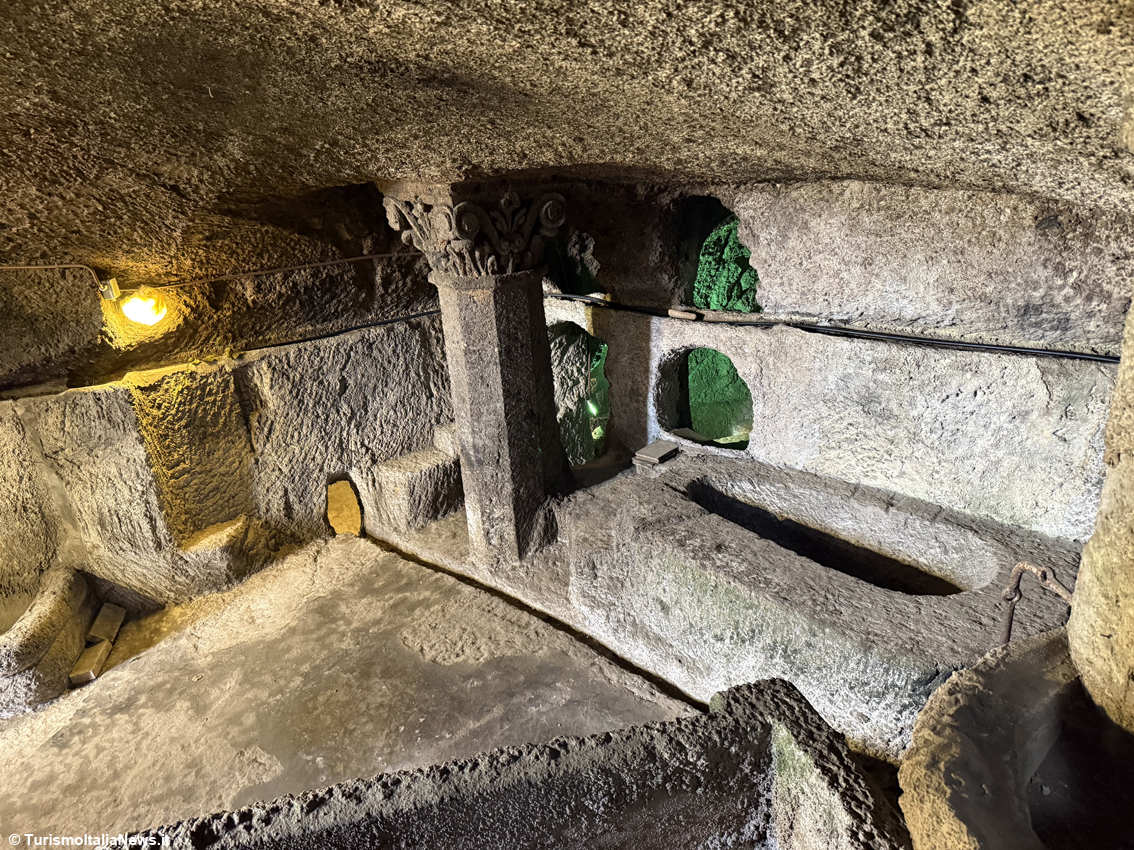
by Giovanni Bosi, Orte / Lazio / Italy
This village in the Tuscia region of Lazio hides its most astonishing face not in the landscape that surrounds it, but in the very bowels of the rock on which it stands. This is Orte — the ancient town perched on a tuff plateau just a few kilometers from Rome, on the border between Lazio and Umbria — a place that has lived for more than two and a half millennia suspended between history and mystery. Its stone houses overlook the Tiber River, but beneath them lies its greatest treasure: Orte Underground, a journey deep into time, where water, stone, and human ingenuity have written a story spanning thousands of years.
(TurismoItaliaNews) To visit Orte Underground is to literally step into the foundations of an ancient civilization. Descending near the bright Piazza della Libertà, the beating heart of the town and the starting point of the itinerary, visitors enter a labyrinth of tunnels, cisterns, wells, and galleries that for centuries ensured the town’s access to water and, therefore, to life itself. These ingenious works, carved into the tuff from the Etruscan period onward and expanded during Roman, medieval, and Renaissance times, tell the story of a community that learned to adapt to the rock—turning it into a resource, a refuge, and a marvel.
Every step underground is a discovery. The route begins with the Hypogean Fountain, an extraordinary cistern probably dating back to the Augustan age: marble columns and ribbed vaults frame the water that for centuries quenched the thirst of Orte’s inhabitants. The slabs of the basins still bear the marks left by terracotta jugs, worn smooth by the hands of women drawing water amid daily chatter and quiet waiting. From this spring—symbol of life and community—unfolds a subterranean world of astonishing structures, sculpted from stone with breathtaking mastery.
Among the most evocative places is the Rock-Cut Nymphaeum, a Renaissance chamber of rare beauty, conceived between the late 15th and early 16th centuries as a retreat of peace and refreshment. Pools, water channels, decorative stuccoes, and elegant architecture make it a small hypogean palace, designed for aesthetic pleasure and physical well-being. It is a “secret underground garden” where the sound of water and the coolness of stone evoke the refined spirit of Renaissance art.
Along the way lies the Vascellaro Hypogeum, a space that bears witness to rural ingenuity and the continuity of life in these tuff cavities. Here, a basin carved into the rock was used for pressing grapes: the must flowed into a second basin below, beginning fermentation. It is a fragment of everyday archaeology, where human labor and nature intertwine in perfect balance. No less fascinating is the Cocciopesto Well, a circular chamber revealing the stratification of centuries: once a Roman water well, later transformed into a medieval grain silo. Its structure, altered but still legible, speaks of an Orte that has always been alive—constantly reinventing its underground spaces according to the needs of the times.
Descending further, one reaches the Rock-Cut Dovecotes, hypogean chambers whose walls are dotted with small, regular niches that once housed pigeons—a valuable food and trade resource as early as the Roman era. Dating to the 13th century, these spaces were later converted into workshops and finally into wine cellars, continuing to serve as integral parts of daily life in the town.
The Orte Underground experience is not merely an archaeological journey; it is a profound sensory and cultural exploration. It is the story of a city that lives vertically—above, daily life; below, its millennial memory. Visitors, guided by experts, walk among dim lights and the scent of damp stone, listen to the dripping of water still flowing through the tunnels, and feel part of a story that has never been interrupted.
But Orte is not just its underworld. Emerging from the belly of the rock, the town opens to the sun in a weave of alleys and squares whose charm remains untouched. Piazza della Libertà, dominated by the Cathedral of Santa Maria Assunta and the Episcopal Palace, still bears the imprint of the Renaissance and ecclesiastical power, while nearby Piazza Colonna hosts the Church of San Silvestro and the Diocesan Museum of Sacred Art. Not to be missed is Piazza Fratini, better known as “Spiazzo Tròjo,” where the echoes of popular life still linger—among proverbs, stories, and small anecdotes handed down from generation to generation. Outside the historic center, the Sanctuary of the Holy Trinity and the Vagno Baths offer yet another perspective on the town’s spirituality and well-being. Orte, a natural crossroads between Lazio, Umbria, and Tuscany, thus stands as a true hub of Tuscia—an ideal destination for those who love art, history, nature, and the thrill of discovery.
Beneath the visitors’ feet lies a silent, mesmerizing world, shaped by the labor and ingenuity of generations. Orte Underground is an experience not easily forgotten: a journey into darkness that illuminates history, a descent into the heart of the earth that paradoxically teaches us to look higher. An irresistible invitation for those who, in travel, seek not only places but authentic emotions. Always, however, through the eyes of travelers—because that is something entirely different from being tourists.

